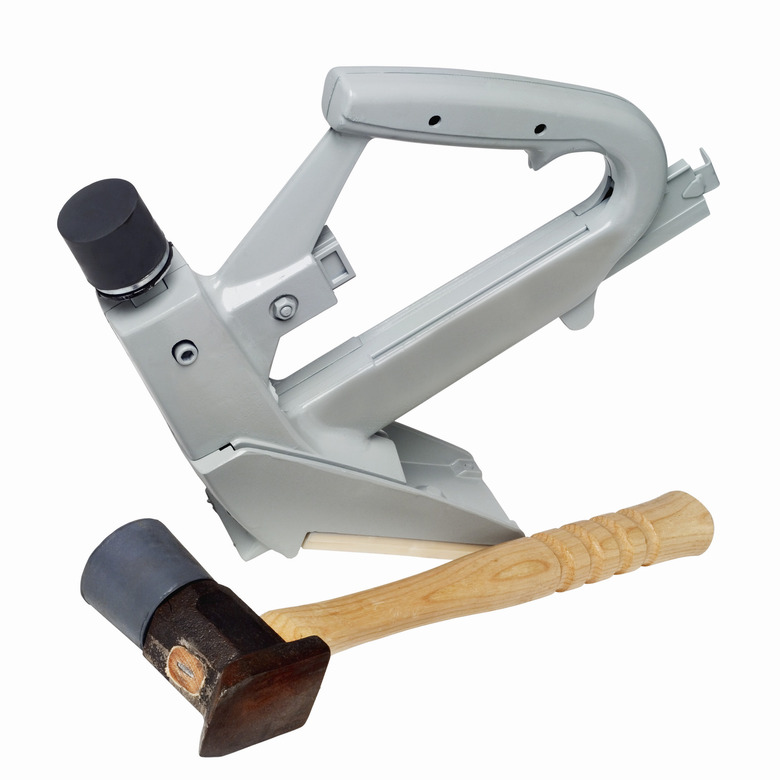What Brad Gauge Should I Use When Hanging Paneling?
A brad nailer — also called a tacker or a stapler — is intended for precision work. The machine is lighter, smaller and more maneuverable than a finish nailer. Brads have smaller, and thus less conspicuous, heads than nails. They are therefore well-suited to craft projects and for use in projects where the surface cannot be finished further, such as wall paneling.
Finish and Brad Nailer Differences
Finish and Brad Nailer Differences
Professionals and hobbyist carpenters alike often use finish nailers and brad nailers interchangeably, but these different machines and fasteners are designed for different purposes. Finish nailers are typically much more costly, because they are more powerful and intended for driving large fasteners through heavier material into sturdier substrates.
Brad Size and Gauge
Brad Size and Gauge
Brad nailers are commonly used to drive nails between 5/8 and 2 inches long. The preferred brad gauge for balancing inconspicuousness with holding power is universally 18 gauge, some three gauges smaller than the fasteners typically used in finish nailers. Because an 18-gauge brad is so much thinner than, for instance, a 15-gauge nail, it will become deformed as it passes through the grain in wood and slides past knots, while the nail will probably simply lock up and leave some of its shank exposed. The 18-gauge brad is so ideal for most projects that it is typically the only size available in stores. Use an 18-gauge brad to hang paneling.
Purchasing Considerations
Purchasing Considerations
Brad nailers drive the fastener using a pneumatic surge; corded machines generally work better than cordless and are typically cheaper. For the infrequent user, cost might be a priority, but a sound purchasing decision should also be influenced by the power with which the brads are driven and whether there is a setting to change drive depth. Other factors include the ease with which the nailer can be disassembled and reassembled in the event of a jam, the ergonomics of the handle and trigger and the amount of recoil experienced on firing. Some manufacturers build in a low-to-empty indicator, which can save a great deal of irritation.
Manufacturers
Manufacturers
Numerous companies manufacture brad nailers, of which the following are representative at time of publishing. Hitachi's NT50AE2 features a mode selector, which allows for trigger firing, or "bumping;" bumping means the machine fires a brad when the barrel is pressed against the surface to be fastened. The Milwaukee 7150-21 is built with a magnesium housing. This keeps machine weight to a minimum and consequently reduces user fatigue, particularly important when working on projects like paneling where at least part of the job is likely to be above head height. The Senco 25 is a cordless unit capable of delivering four drives every second, with approximately 1,000 drives between battery charges.
